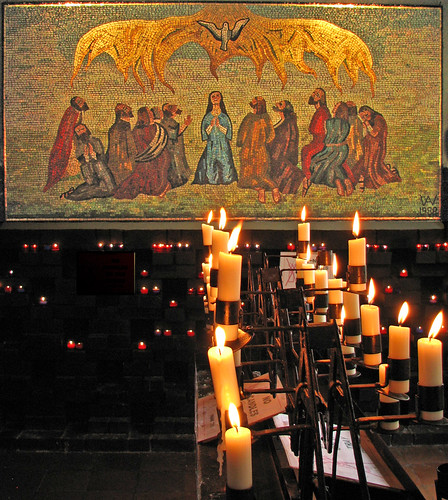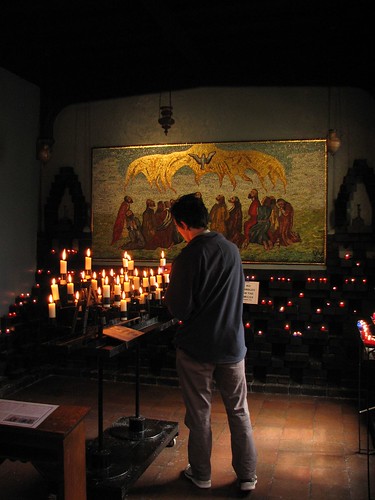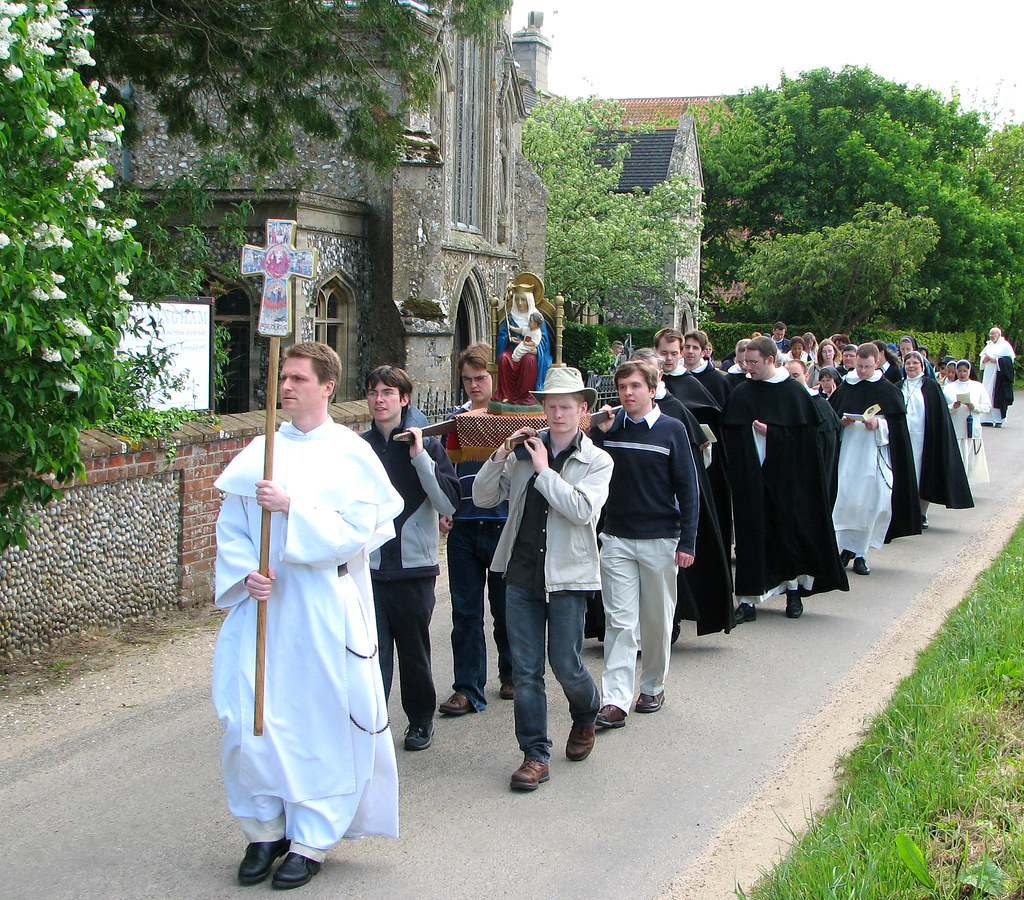To understand this word requires some knowledge of the history of the Jewish people and their understanding of God’s action.
The English word Christ is derived from the Latin
Christus which corresponds to the New Testament Greek
Christos meaning ‘anointed’. The New Testament Greek itself translates a Hebrew word
masiah from which comes the English word
messiah.
In the Old Testament the Israelite king is called
masiah yhwh, ‘the anointed one of God’, because he is consecrated by an anointing on his ascendance to the throne. The king and the priests were anointed. For kings, the right of succession to the throne was assured by the ceremony of anointing, by a priest or by a prophet (as David was anointed by Samuel, see the illustration). The peculiar significance of this anointing was that the one anointed king became God’s chosen one, invested with his spirit and guarded by his special providence. The king was a leader who was divinely endowed to carry out the will of God. Others also could be ‘the anointed one of God’, such as patriarchs or even a pagan like Cyrus, King of the Persians (Isaiah 45:1).
When the kingdom of Israel was attacked and eventually devastated by its powerful neighbours, the appearance of a future king or ‘messiah’ whose rule would be glorious and secure was foretold by Isaiah (8 cent. BC), Jeremiah (7 cent. BC) and Ezekiel (6 cent. BC). This hope did not die; it was still alive at the time of Jesus. In the last century before Jesus, the hoped for saviour of the Jews who would restore the throne of David was called simply
hammassiah, ‘the anointed one’, or in Greek
ho Christos. At this time there were several different kinds of Jews, as there are several different kinds of Christians today, and there were correspondingly diverse expectations about what the ‘messiah’ would be. Some thought there would be ‘two messiahs’, a priestly one and a kingly one. Some thought he would be a symbolic figure presiding over an ideal socio-religious order. For some the ‘messiah’ had military and political overtones. For others it was more mythological and apocalyptic.

When the disciples of Jesus recognised him as the promised saviour, they proclaimed him as the ‘messiah’ or Christ (see Mark 8:29, Acts 5:42, 9:22). They seem to have thought he would establish an earthly kingdom, though Jesus himself was wary of giving them this idea. His own messiahship is paradoxical and strange. His crown is made of thorns. He enters Jerusalem in triumph but on a donkey, and he attacks the central institution of Jewish religion, the temple. He is anointed, not by a priest but by a woman who is socially a nobody, even a sinner (see Luke 7:36-50). He is the ‘king of kings', and he identifies himself with the low, the ignored, the outcast, the sinner, the victim of violence.
Christos was originally a descriptive term. However, when the Greek-speaking pagans began to become Christians, the Jewish notion of the Messiah meant little to them, and they understood
Christos as though it were one of the saviour’s names. This may have been because it sounded practically the same as the personal name
Chrestos which means ‘good, or kind’, as though Jesus’ name itself is goodness and kindness. This pagan lack of understanding of the meaning of
Christos is why it is often found in the New Testament without the definite article
ho, ‘the’, either alone or together with the name Jesus: hence 'Christ Jesus' and then the way in which he is best known, 'Jesus Christ'.
Older Creed Posts























